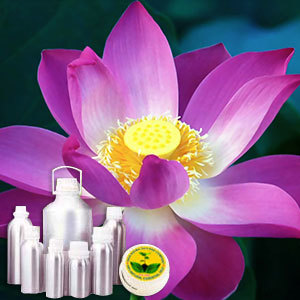Botonical Name | : | Nelumbo nucifera | |
CAS # | : | N/A | |
Country of Origin | : | India | |
Color & Odor | : | Yellow orange liquid with floral fragrance | |
Solubility | : | Soluble in alcohol and oil, insoluble in water | |
Specific Gravity | : | 0.9650 - 0.9850 | |
Optical Rotation | : | 0.77 to 0.79 | |
Refractive Index | : | 1.6765 - 1.6925 | |
Flash Point | : | 65°C | |
Plant Part Used | : | Flowers | |
Extraction Method | : | Steam Distillation |
DESCRIPTION:
Leaf is big heart shaped green in color with the cup having centre dot which collects water in it, color of the lotus flower is relaxing pink with a yellowish surrounding of fibers within the petals . The plants made up big general, both in space they adopted and the sizing of leaf. They beam the cylindrical stems of both the leaves and blossoms from the muddied bed from the body of water high into the atmosphere, leaf and the flowers of the lotus are on the surface of the water and the stem of the plant connects it to the muddy base of the soil for getting the required minerals for its growth.CONSTITUENTS:
methyl hexadecanoate (palmitic acid methyl ester), 22.66% and methyl cis,cis,9,12-octadecadienoate (linoleic acid methyl ester) 11.16%. BLENDS WITH:
Sandalwood oil, cardamom oil and other spice oils. COMMON NAMES:
Lotus, nelumbo nuficera. USES:
Lotus is been used traditionally to cure skin conditions, fever, fungal infections and cholera. It’s also believed that it’s being employed in the cure for diabetes and arthritis. The flower is also having a scared place in holy belief lotus is considered as offering to gods to please them in prayers. It is famous in Hinduism and Buddhism.


































